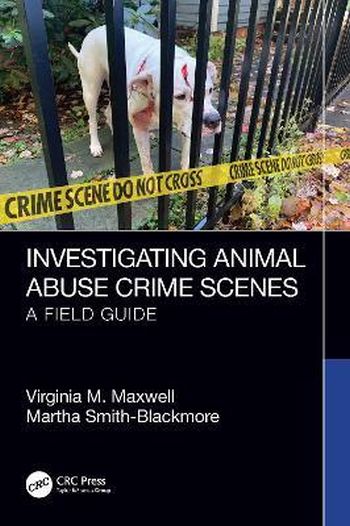
Animal abuse is well established as a gateway crime linked to other forms of antisocial behaviors and broader criminal violence. Increased awareness of the link between animal abuse and criminal behavior has led many states to mandate cross-reporting between agencies overseeing the welfare of families and of animals.
Investigating Animal Abuse Crime Scenes: A Field Guide is designed for first responders—such as animal control officers and police officers—as well as forensic scientists and other criminal justice professionals who are who are tasked with processing and analyzing animal crime scenes and evidence. The book serves equally as a useful resource for those in the field and laboratory, in addition to those professionals who are further along in the investigative and judicial process.
The book naturally divides into four distinct parts. Part I addresses general crime scene procedures that includes securing and releasing the scene, search and seizure issues, chain of custody, documentation, searching for evidence, and the use of enhancement technologies. While many readers may already be familiar with such concepts, coverage addresses these in the context of unique factors relating to animals and animal abuse cases. Part II will move into recognition, collection, and preservation of different types of evidence that may be located at animal abuse scenes, with examples of the most important evidence for specific case types. Additionally, each major type of evidence will be addressed in terms of specific recognition and collection considerations, as well as the forensic significance of the evidence. Important issues related to contamination or degradation of evidence will also be covered.
Part III addresses the role of the veterinarian and the key aspects of veterinary forensic science. These include issues such as examining a living animal, time of death, cause and manner of death, wound patterns, the forensic necropsy, and key evidence collection from the animal(s), living or deceased. The emotional abuse of animals, both independently, and as a result of other forms of abuse, will be addressed throughout this section. Finally, Part IV presents useful checklists and templates for crime scenes processing, necropsy, and report writing.
Investigating Animal Abuse Crime Scenes fills the growing need for a handy, comprehensive field reference that specifically focuses on the crime scene processing, investigation, analysis of evidence, and the subsequent adjudication of animal abuse cases within the court system.